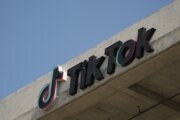Since discovering lithium in the 1800s, people have found lots of uses for the soft, silver-white metal: lubricants, psychiatric medications and even as the title for one of the most popular songs by grunge rock band Nirvana. For investors, perhaps the most interesting use for lithium is in the burgeoning battery sector.
Growing demand for fully electric vehicles, whose batteries use more of the metal than hybrids, is increasing the need for lithium. Additionally, the renewable energy sector will be seeking more lithium batteries to store solar- and wind-generated electricity.
Lithium isn’t traded on an exchange like other commodities such as oil, copper or corn, but investors can get exposure to the metal through an exchange-traded fund or directly with companies that produce it or use it to make batteries.
Batteries. When people buy an electric vehicle from Tesla Motors (ticker: TSLA), they’re “really buying a battery that has a car on it,” says Hardeep Walia, co-founder and CEO of online brokerage Motif Investing and owner of a Tesla vehicle. Tesla is building a lithium-ion battery factory in Nevada that will produce electric car batteries as well as stationary energy storage devices.
With the rise of electric vehicles, Motif put together a basket of battery-related stocks that includes Tesla and lithium producers Sociedad Quimica y Minera de Chile (SQM), Albemarle Corp. (ALB) and FMC Corp. (FMC).
In addition to demand from electric vehicles and the renewable energy sector, the investment case for lithium also includes the proliferation of mobile phones and tablets, which also need lithium batteries, Walia says.
Demand for lithium for battery applications is growing by about 10 percent per year, says Dmitry Silversteyn, basic materials analyst for Longbow Research, an equity research firm in Independence, Ohio. Total growth, which includes uses in lubricants and medical applications, is around 3 to 5 percent annually, he says.
That probably won’t increase until electric car demand accelerates, which may come in 2017-2018, Silversteyn says.
Supply. Companies producing lithium have enough of the metal to supply the world’s needs for five to seven years, and more capacity can be brought online relatively quickly, Silversteyn says. But rapid growth in demand could make for some short-term tightness in the market.
Chile and Australia are the world’s biggest lithium-producing nations, followed by China and Argentina. Bolivia also has substantial lithium deposits, but they are controlled by the government.
Pennsylvania-based FMC forecasts $33 million to $43 million in lithium segment earnings this year. Last year, FMC’s lithium segment earned $23 million off of $238 million in revenue, out of a company total of $3.3 billion in revenue.
In the 12 months through Sept. 30, revenues from lithium and derivatives for Chile-based SQM totaled $212 million, or 12 percent of total revenues.
And in the first nine months of 2015, Louisiana-headquartered Albemarle, which produces lithium from operations in Chile and Nevada and holds a 49 percent stake in a company mining in Australia, sold nearly $370 million worth of lithium out of total sales of $2.7 billion.
Other, more speculative, plays on the production side include Western Lithium, which is developing lithium projects in Argentina and Nevada, and Pure Energy Minerals, which is developing a lithium project in Nevada and in September signed an agreement with Tesla for potential lithium supply.
Poor performance. Over the past year, lithium-related stocks have not done well. The Global X Lithium ETF (LIT), which targets the most liquid lithium battery producers, miners and refiners by tracking the Solactive Global Lithium Index, was down 21 percent. SQM, Albemarle and FMC were off 34 percent, 3 percent and 40 percent, respectively.
Because each of these companies is diversified beyond lithium, their recent declines are probably due to other issues with other parts of their business, Silversteyn says, noting he believes the investment case for lithium is still intact because of potential future demand from electric vehicles.
Declines are more likely due to concerns in the electronics industry, the broader consumer market and China, Silversteyn says.
Motif Investing’s basket of battery equities, which includes 12 stocks, is weighted toward battery makers but also includes the producers, industrial solutions companies and a consumer application stock. The basket, which the company calls a motif, is down more that 20 percent in the last 12 months, while the Standard & Poor’s 500 index is off about 8 percent.
One reason for lithium’s weak performance is its relation to renewable energy, which tends to move inversely to oil stocks, Walia says. With oil prices sliding, alternative energy has looked less appealing as a competitor.
Headwinds also include slowing Chinese growth, a mobile device market that has reached saturation in some areas and macroeconomic and interest-rate uncertainty, he says.
While there is no simple answer as to whether now is a good time for bargain-hunting in lithium, Walia says taking a position makes sense for investors who think oil will move higher, a Chinese recovery will increase demand for mobile devices and electric vehicles will take off to also be bullish on lithium.
“This is not a bad way to play a recovery,” he says. “But you have to have conviction on a lot of things.”
More from U.S. News
10 Ways to Play the Explosive World of Small-Cap Stocks
9 Growth Funds That Will Turbocharge Your Portfolio
10 Tips for Keeping a Cool Head in a Market Meltdown
Lithium Holds Battery-Powered Potential For Investors originally appeared on usnews.com







